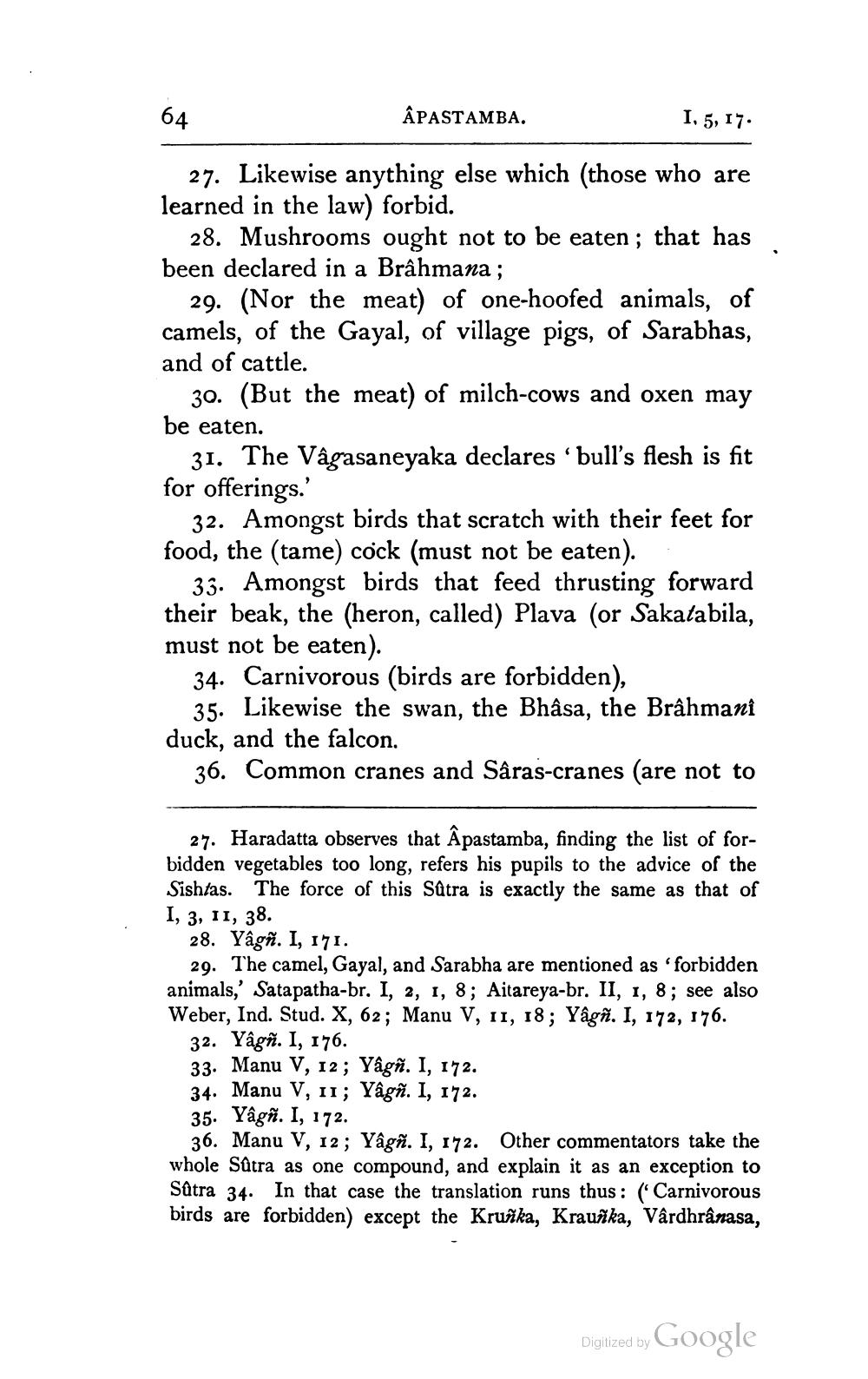________________
I. 5, 17.
64
27. Likewise anything else which (those who are learned in the law) forbid.
28. Mushrooms ought not to be eaten; that has been declared in a Brâhmana;
29. (Nor the meat) of one-hoofed animals, of camels, of the Gayal, of village pigs, of Sarabhas, and of cattle.
30. (But the meat) of milch-cows and oxen may be eaten.
31. The Vâgasaneyaka declares 'bull's flesh is fit for offerings.'
ÂPASTAMBA.
32. Amongst birds that scratch with their feet for food, the (tame) cock (must not be eaten).
33. Amongst birds that feed thrusting forward their beak, the (heron, called) Plava (or Sakatabila, must not be eaten).
34. Carnivorous (birds are forbidden),
35. Likewise the swan, the Bhâsa, the Brâhmanî duck, and the falcon.
36. Common cranes and Sâras-cranes (are not to
27. Haradatta observes that Âpastamba, finding the list of forbidden vegetables too long, refers his pupils to the advice of the Sishtas. The force of this Sûtra is exactly the same as that of I, 3, 11, 38.
28. Yâgn. I, 171.
29. The camel, Gayal, and Sarabha are mentioned as 'forbidden animals,' Satapatha-br. I, 2, 1, 8; Aitareya-br. II, 1, 8; see also Weber, Ind. Stud. X, 62; Manu V, 11, 18; Yâgn. I, 172, 176.
32. Yâgn. I, 176.
33. Manu V, 12; Yâgn. I, 172.
34. Manu V, 11; Yâgn. I, 172. 35. Yâgñ. I, 172.
36. Manu V, 12; Yâgñ. I, 172. Other commentators take the whole Sûtra as one compound, and explain it as an exception to Sutra 34. In that case the translation runs thus: ('Carnivorous birds are forbidden) except the Kruška, Kraužka, Vârdhrânasa,
Google
Digitized by




